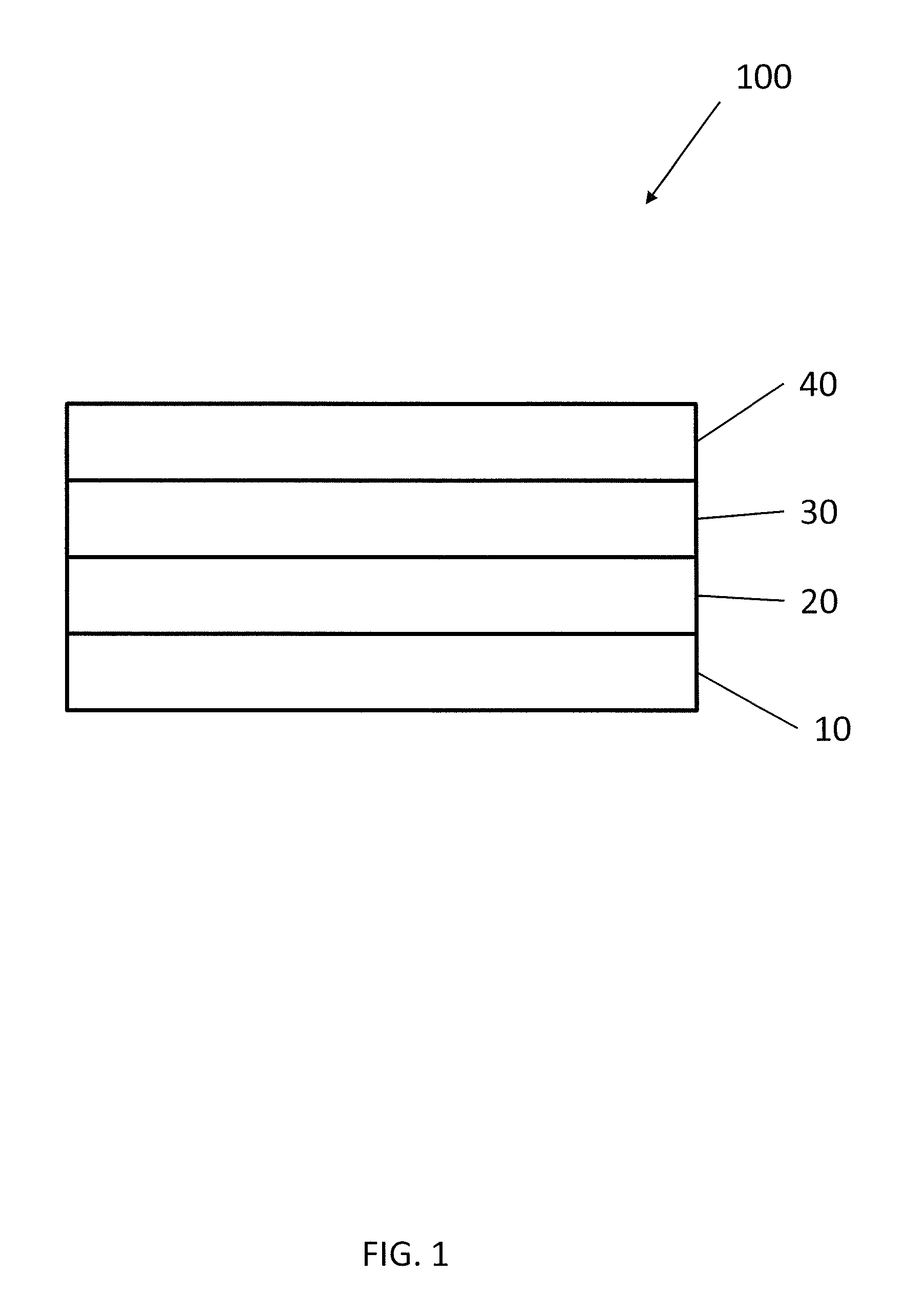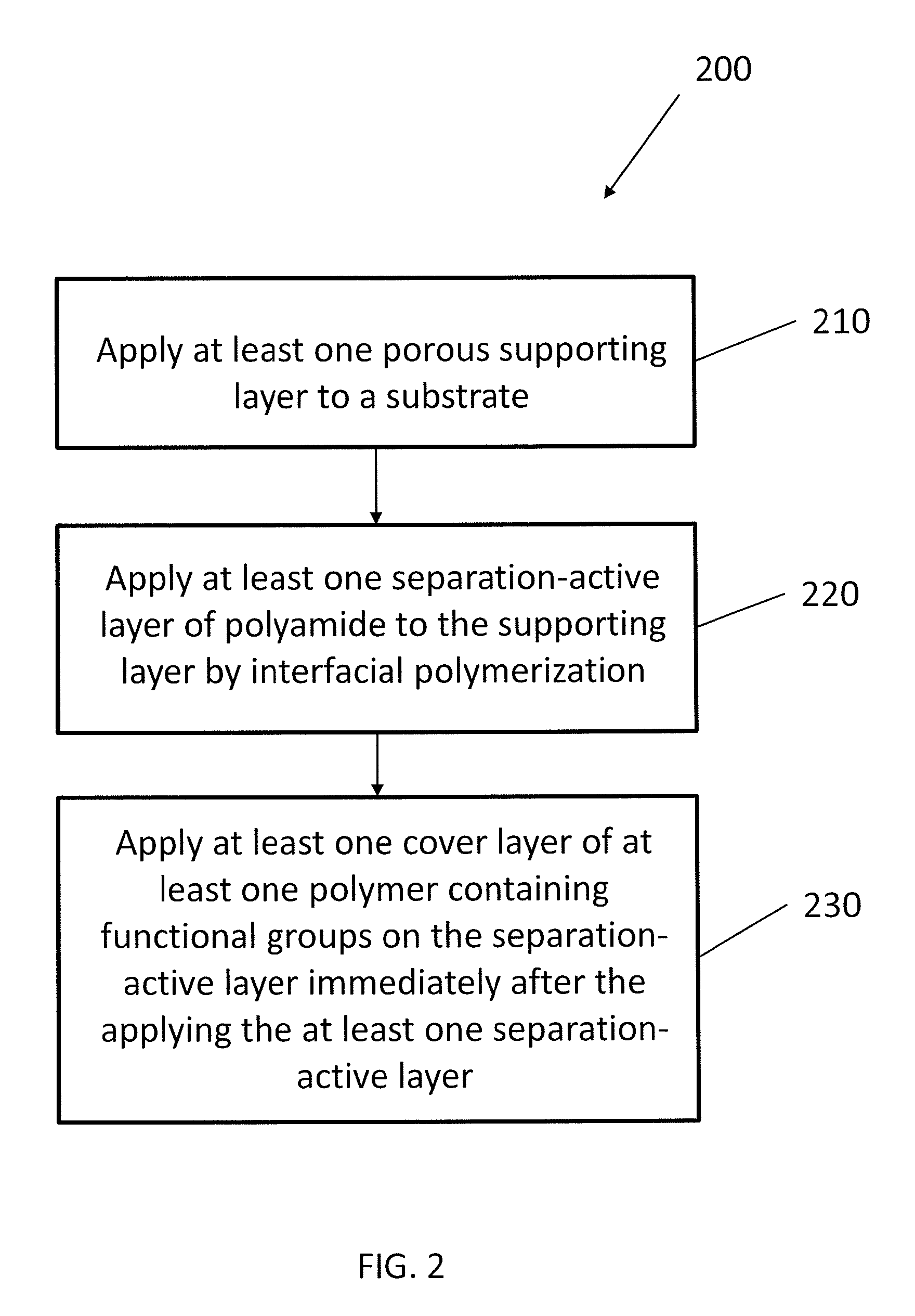Reverse osmosis or nanofiltration membranes and method for production thereof
- Summary
- Abstract
- Description
- Claims
- Application Information
AI Technical Summary
Benefits of technology
Problems solved by technology
Method used
Image
Examples
example 1
Comparative Example
[0069]A reverse osmosis or nanofiltration membrane is produced from a supporting membrane comprising a fleece and a porous polyethersulfone layer applied thereto having a size of 85.2 cm2 in that the supporting membrane is dipped into a solution of m-phenylenediamine in water (concentration: 20 g / L). The excess liquid is removed by a roller. The impregnated supporting membrane is then inserted into a frame, wherein the polyethersulfone surface faces upward and an acid chloride solution of 1 g / L trimesoyl chloride (TMC) in a hexane / tetrahydrofuran (THF) mixture with 0.5% THF is poured onto the polyethersulfone surface. This forms the separation-active layer. After 180 s, the excess acid chloride solution is removed by decanting. The impregnated and coated supporting membrane is then dried at room temperature for 30 s and at 80° C. for 120 s.
[0070]The reverse osmosis or nanofiltration membrane produced in this manner is then washed with fully desalinated (FD) water ...
example 2
[0072]A reverse osmosis or nanofiltration membrane is produced from a supporting membrane comprising a fleece and a porous polyethersulfone layer applied thereto having a size of 85.2 cm2 in that the supporting membrane is dipped into a solution of m-phenylenediamine in water (concentration: 20 g / L). The excess liquid is removed by a roller. The impregnated supporting membrane is then inserted into a frame, wherein the polyethersulfone layer faces upward and an acid chloride solution of 1 g / L trimesoyl chloride (TMC) in a hexane / tetrahydrofuran (THF) mixture with 0.5% THF is poured onto the surface. This forms the separation-active layer. After 180 s, the excess acid chloride solution is removed by decanting.
[0073]Immediately thereafter, a solution of 10 mass % poly(amide amine) (PAMAM) in water is then sprayed onto the surface of the separation-active layer as a cover layer. After an additional 180 s, the membrane is then dried at 80° C. for 120 s.
[0074]The reverse osmosis or nanof...
PUM
| Property | Measurement | Unit |
|---|---|---|
| Percent by mass | aaaaa | aaaaa |
| Percent by mass | aaaaa | aaaaa |
| Percent by mass | aaaaa | aaaaa |
Abstract
Description
Claims
Application Information
 Login to View More
Login to View More - R&D
- Intellectual Property
- Life Sciences
- Materials
- Tech Scout
- Unparalleled Data Quality
- Higher Quality Content
- 60% Fewer Hallucinations
Browse by: Latest US Patents, China's latest patents, Technical Efficacy Thesaurus, Application Domain, Technology Topic, Popular Technical Reports.
© 2025 PatSnap. All rights reserved.Legal|Privacy policy|Modern Slavery Act Transparency Statement|Sitemap|About US| Contact US: help@patsnap.com



